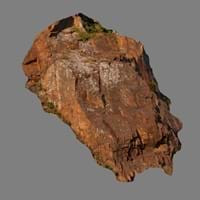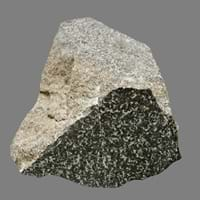Definition
Granulite is fine to medium grained metamorphic rock with a granular of polygonal crystals.
Diabase is a fine-grained igneous rock which is composed mostly of pyroxene and feldspar
Origin
Central Europe
Germany
Discoverer
Unknown
Christian Leopold von Buch
Etymology
From Latin granulum, a little grain or fine grained
From Greek di + base
Class
Metamorphic Rocks
Igneous Rocks
Sub-Class
Durable Rock, Hard Rock
Durable Rock, Hard Rock
Group
Not Applicable
Volcanic
Other Categories
Coarse Grained Rock, Medium Grained Rock, Opaque Rock
Fine Grained Rock, Medium Grained Rock, Opaque Rock
Texture
Granoblastic
Aphanitic, Granular
Color
Black, Brown
Dark Grey to Black
Durability
Durable
Durable
Scratch Resistant
Yes
Yes
Appearance
Veined or Pebbled
Vesicular
Interior Uses
Bathrooms, Countertops, Decorative Aggregates, Entryways, Flooring, Homes, Hotels, Interior Decoration, Kitchens, Stair Treads
Countertops, Decorative Aggregates, Homes, Interior Decoration, Kitchens
Exterior Uses
As Building Stone, As Facing Stone, Garden Decoration, Office Buildings, Paving Stone
As Building Stone, As Facing Stone, Paving Stone, Garden Decoration, Office Buildings
Other Architectural Uses
Curbing
Curbing
Construction Industry
As Dimension Stone, Building houses or walls
As Dimension Stone, Building houses or walls, Cement Manufacture, Construction Aggregate, for Road Aggregate
Medical Industry
Not Yet Used
Not Yet Used
Antiquity Uses
Artifacts, Monuments, Sculpture
Artifacts, Monuments, Sculpture, Small Figurines
Commercial Uses
Curling, Gemstone, Laboratory bench tops, Soil Conditioner, Tombstones
An Oil and Gas Reservoir, Cemetery Markers, Commemorative Tablets, Laboratory bench tops, Jewelry, Sea Defence, Tombstones
Types
Not Available
Not Available
Features
Clasts are smooth to touch
Smooth to touch
Archaeological Significance
Famous Monuments
Data Not Available
Stonehenge in English county of Wiltshire
Famous Sculptures
Data Not Available
Data Not Available
Pictographs
Not Used
Not Used
Petroglyphs
Not Used
Not Used
Formation
Granulite is a fine-grained granular metamorphic rock in which the main component minerals are feldspars and quartz and forms at high temperature and pressure conditions.
Diabase forms when molten igneous rock is squeezed up into a vertical crack in other rocks, the crack is usually forced apart and the molten rock cools in the space to form a tabular igneous intrusion cutting across the surrounding rocks and is known as a dike.
Mineral Content
Amphibole, Biotite, Feldspar, Hornblade, Micas, Muscovite or Illite, Plagioclase, Quartz
Augite, Chlorite, Olivine, Plagioclase, Pyroxene, Pyrrhotite, Serpentine
Compound Content
Aluminium Oxide, CaO, Carbon Dioxide, Iron(III) Oxide, FeO, Potassium Oxide, MgO, MnO, Sodium Oxide, Phosphorus Pentoxide, Sulfur Dioxide, Titanium Dioxide
Aluminium Oxide, CaO, Chromium(III) Oxide, Iron(III) Oxide, Potassium Oxide, MgO, Sodium Oxide, Silicon Dioxide, Sulfur Trioxide
Types of Metamorphism
Not Applicable
Burial Metamorphism, Cataclastic Metamorphism, Contact Metamorphism, Regional Metamorphism
Types of Weathering
Biological Weathering, Chemical Weathering
Biological Weathering, Chemical Weathering
Types of Erosion
Chemical Erosion, Water Erosion, Wind Erosion
Chemical Erosion, Coastal Erosion, Water Erosion
Grain Size
Medium to Coarse Grained
Fine to Medium Grained
Fracture
Not Available
Conchoidal
Porosity
Very Less Porous
Highly Porous
Luster
Vitreous
Not Available
Cleavage
Imperfect
Not Available
Toughness
Not Available
1.6
Specific Gravity
2.8-3.0
2.86-2.87
Transparency
Opaque
Opaque
Density
3.06-3.33 g/cm3
2.7-3.3 g/cm3
Specific Heat Capacity
Not Available
Resistance
Heat Resistant, Wear Resistant
Heat Resistant, Impact Resistant, Pressure Resistant, Wear Resistant
Deposits in Eastern Continents
Asia
China, India, Iran, Saudi Arabia, Sri Lanka, Taiwan, Thailand, Turkey, Vietnam
India
Africa
Angola, Egypt, Madagascar, Nigeria, South Africa
South Africa, Tanzania
Europe
Austria, Belgium, Finland, France, Germany, Italy, Norway, Sardinia, Spain, Switzerland, The Czech Republic, Venezuela
Germany, Greece, Italy, Scotland, Turkey
Others
Not Yet Found
Antarctica, Greenland
Deposits in Western Continents
North America
Canada, USA
Canada, USA
South America
Not Yet Found
Argentina, Brazil, Colombia, Venezuela
Deposits in Oceania Continent
Australia
Not Yet Found
Central Australia, New Zealand, Queensland, Western Australia










